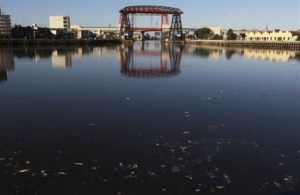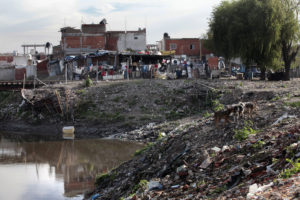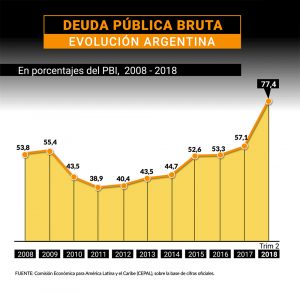
The Matanza-Riachuelo River, called Riachuelo at its mouth and Matanza River in most of its development, is a water course 64 km east of Argentina, which is born in the province of Buenos Aires, is the southern limit of the Autonomous city of Buenos Aires and ends at the Rio de la Plata.
The Matanza-Riachuelo Basin comprises part of the city of Buenos Aires and the municipalities of Almirante Brown, Avellaneda, Cañuelas, Esteban Echeverría, Ezeiza, General Las Heras, La Matanza, Lanús, Lomas de Zamora, Marcos Paz, Merlo and San Vicente.
Its course receives numerous industrial wastes, especially tanneries, which position it as the third most polluted river on the planet.
The authorities of the Matanza-riachuelo basin (ACUMAR) is a public body that acts as the highest authority in environmental matters in the region, combining the work of the three governments that have jurisdiction in the territory: Nation, Province of Buenos Aires and Autonomous City of Buenos Aires. It is responsible for implementing a sanitation plan to improve conditions in the basin, but it was reported that the authorities of the basin established regulatory changes that imply a setback in the process of sanitation of the river.
For this reason, the environment commission of the Buenos Aires legislature, chaired by María Inés Gorbe, asked the Buenosairean executive to report on the contamination of the stream. The environmental commission asked the City to explain why I authorize the overturning of internationally banned contaminants in the river.
ACUMAR established regulatory changes through resolution 46/2017 where the sanitation process is affected, now industries can throw polluted watercourses, so-called «Persistent Organic Pollutants», the best-known of which is the DDT that was banned from use after a worldwide campaign after being found to be a potential carcinogen for humans.
The watershed authorities also decided to maintain the permit to the establishments to dump volumes of contaminated water without taking into account the water purification capacity.
In conclusion, what we are trying to emphasize in the article is the importance of continuing with the sanitation plan so that the river is as decontaminated as possible, since in the basin of 2240 km², there are about 3,500,000 people.







